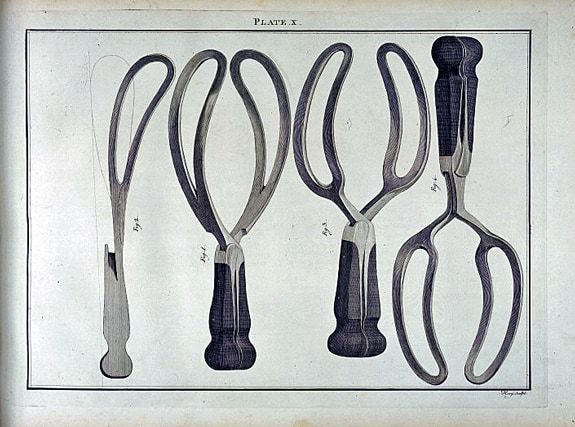Although they may not know the term, any television viewer can recognize the lithotomy position: the feet-in-stirrups, hair-perfectly-blown-out posture women assume for giving birth.
It’s not a great position to be in even on routine checkup days, as anyone who has been asked to “scoot a little closer” and then somehow relax understands. But as a birthing position, the lithotomy position is even more controversial, having been linked to unnecessary interventions like inductions and C-sections.
So why did women start lying down to give birth in the first place?
One reason is that they couldn’t get up. Interventions like induction, fetal heart monitoring, and epidurals, all tether laboring women in place.
Although medical intervention is certainly a partial answer to the question, it’s not the oldest or most interesting one.
King Louis XIV

The king was reportedly fascinated by birth and, as the father to as many as twenty-something children, had a lot of occasions to consider positions that might make the birth easier for onlookers to observe. Because people like to copy royal trends, other women started to labor in royal fashion, birthing a trend that was common in France by the end of the seventeenth century.
Secret Forceps

The Chamberlens, a father-son duo who turned midwifery into a booming family business, developed forceps in the early seventeenth century and kept them a trade secret for decades.
For them, the lithotomy position helped protect their lucrative business advantage by keeping their tools a mystery. They even went as far as blindfolding the women giving birth.
More “Medical”

One more explanation for the lithotomy position is that it marks the transition of the laboring woman into a patient.
When midwives assisted the majority of births, medical professionals were only called in for emergencies. Within the medical community, these surgeons were viewed as lower class practitioners. Medical devices – like the forceps – were developed in part to exclude midwives from births (women were not legally allowed to use surgical instruments) and also as a tool of professionalization.
The field of obstetrics didn’t necessarily require lithotomy, but it did require legitimacy. The term “lithotomy” dates back to the Hippocratic oath, where it referred to removing kidney stones. It makes sense that doctors seeking to claim some authority over childbirth, to legitimize their field, might use a technique as old as the practice of medicine.
Is the lithotomy position less safe?
The 2017 Cochrane review of birthing in the lithotomy position has been widely used to argue that the position is unsafe for birth, but the review itself doesn’t make this claim. There is as of yet relatively scant scientific evidence that this is the case. This doesn’t mean that the lithotomy position is better or worse, just that there isn’t yet a strong pile of data to lead researchers to either conclusion.
The World Health Organisation recommends that women without epidural analgesia, should be encouraged to adopt a birth position of their choice – this includes upright positions.
Should we keep lying down to give birth?
Whether it’s a result of modern medical interventions, regal curiosity, or unscrupulous business practices, it’s clear that women have been lying down to give birth for longer than we normally imagine. Perhaps the better question is not when did pregnant women start lying down to give birth, but why and is it something we should still be practicing?




Leave a Comment